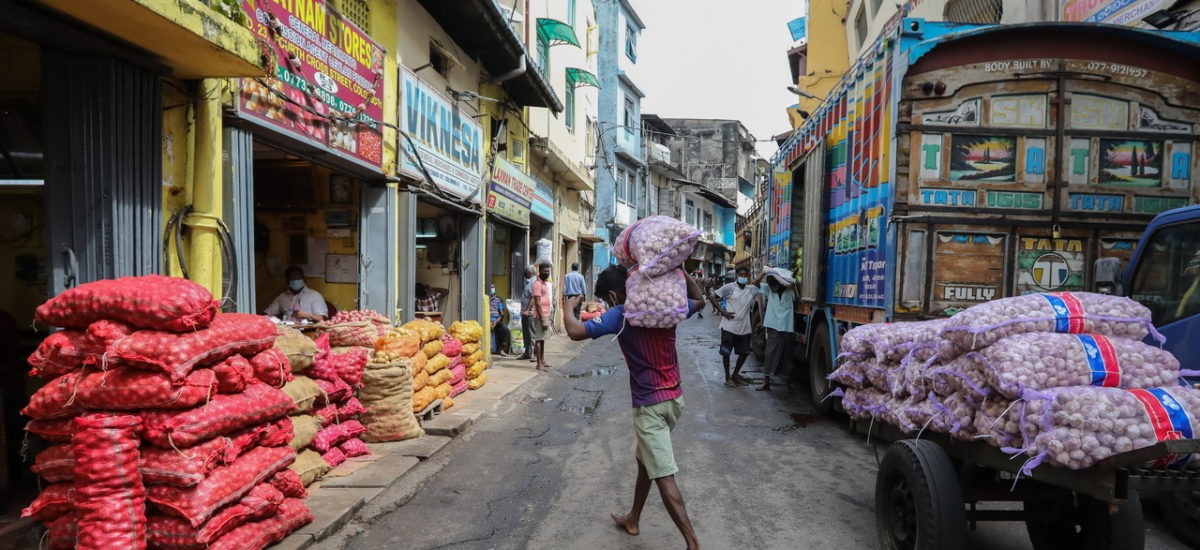Photo courtesy of The Straits Times
The introduction of the Emergency (Provision of Essential Food) Regulation No. 1 of 2021 by the extraordinary gazette No.2243/3 by the President under Section 5 of the Public Security Ordinance was subject to many critical discussions due to the adverse impact that Emergency Regulations have on democracy and the rights of citizens. There was a question as whether there was an emergency that necessitated the President to implement the Emergency Regulations and whether there were general laws that could have been used instead.
The main reasons that had led to the introduction of the Emergency Regulation were the shortage for essential food items such as rice, sugar and paddy and the charging of high prices for them. The regulations allowed the authorities to buy essential food items for a reasonable price and supply them to the public at a reasonable price and to prevent hoarding. Although the duration of the Emergency Regulations has expired now, it is important to assess whether the objectives intended to achieve by the regulation could have been achieved by using existing general laws. The Consumer Affairs Authority Act, No.09 of 2003 is a special law introduced to protect the welfare of consumers in society. The term consumer welfare under the Consumer Affairs Authority Act is expected to be achieved through low prices for goods and the availability of goods for the public to purchase. In fact, legal provisions in Part II and Part III of the Consumer Affairs Authority Act are specifically designed to secure these two objectives. It is evident that the Consumer Affairs Authority Act could have been used to achieve the same task the Emergency Regulation was introduced to do. Yet it is important to analyze legal provisions of both the Emergency Regulation and the Consumer Affairs Authority Act to decide whether actually the Consumer Affairs Authority Act could have been used to serve the purpose the Emergency Regulation was intended to achieve.
One crucial area was the assurance of the continuous supply of essential food items to the market. To facilitate this, Section 10 of the Emergency Regulation was designed to prohibit any sort of disturbances caused by any person who is engaged in any duty or employed in any service falling within the category of essential services. Services involving the supply of essential food items to the market were defined within the meaning of essential services so that the Emergency Regulation could restrict any disturbances caused to the continuous supply of these items to the market. Yet the Consumer Affairs Authority Act also contains few legal provisions where the same outcome could be secured. For instance, Section 15, 16, and 17 can be used by the Consumer Affairs Authority to prohibit any trader from refusing to sell, hiding goods, refusing to accept the possession of goods and, most importantly, keeping in possession goods more than required by any person or any trader respectively for personal use or trading purposes. Apart from these sections, Section 34 and 35 allow the Consumer Affairs Authority to restrict any anti-competitive practice by a trader that could result in limiting the number of essential food and outlets in the market. All these provisions entail the Consumer Affairs Authority to act against any trader operating to restrict the continuous supply of goods including essential food items.
On the other hand, the Emergency Regulation contained progressive penalties to discourage any respective party from engaging in restrictive practices that could harm the continuous supply of essential food items to the market. Sections 11 and 12 respectively empower the police to take possession of any premises in violation of Section 10 and to allow the competent authority to seize and re-sell seized food items to the public for a reasonable price if a responsible party disturbs the continuous supply of essential supplies and services to the market. However, the Consumer Affairs Authority Act when compared to the Emergency Regulation provides legal provisions under Sections 58 and 60(3) respectively for the Consumer Affairs Authority to seize food items if a trader hides, denies the possession, and keeps stocks more than required and to impose imprisonment and/or fines for breaching aforementioned Sections 15, 16 and 17. Thus, the Consumer Affairs Authority is also well equipped to impose penalties to demote traders from disturbing the continuous supply of goods and services. It is evident that the Consumer Affairs Authority Act could have been used to secure the same effect the Emergency Regulation.
It is important to see how the Consumer Affairs Authority Act could have been used to maintain low prices of essential food items as an alternative to the Emergency Regulation. Section 12 of the Emergency Regulation facilitated the competent authority to seize any essential food item and to sell it to the public for a reasonable price if respective parties contravened legal provisions of the Emergency Regulation. The provision ensured the maintenance of low prices for essential goods in the market. The Consumer Affairs Authority Act, on the other hand, holds few legal provisions to secure the same outcome. For instance, Section 18 entails any trader to obtain prior permission from the authority before raising the price of goods if the Minister has named the goods as specified goods. Section 20(5) of the Act empowers the Consumer Affairs Authority to set a maximum retail price for goods, which necessitates any trader to sell them below the retail price. Section 34 and 35 together empower the Consumer Affairs Authority to maintain healthy competition in the market by which a low price is considered as an inevitable outcome. Thus, the authority could regulate the price of essential food items and maintain low prices. Despite the prevalence of adequate legal provisions already made available in the general law to maintain low prices, a new Emergency Regulation was introduced to achieve the same purpose.
The government has adopted artificial price controlling mechanisms such as imposing a maximum retail price and naming specific food items as the solutions to resolving the issues of food shortages and high prices. But imposing artificial price controlling mechanisms in the absence of healthy competition is never the right answer to an imperfect market condition. Instead, the proper approach would be first to maintain healthy competition in the market with the execution of competition policies and competition law. Operation of healthy competition would automatically lead to low prices and more supply.


